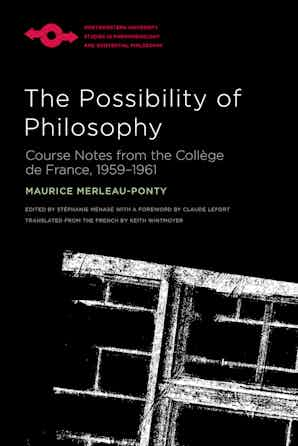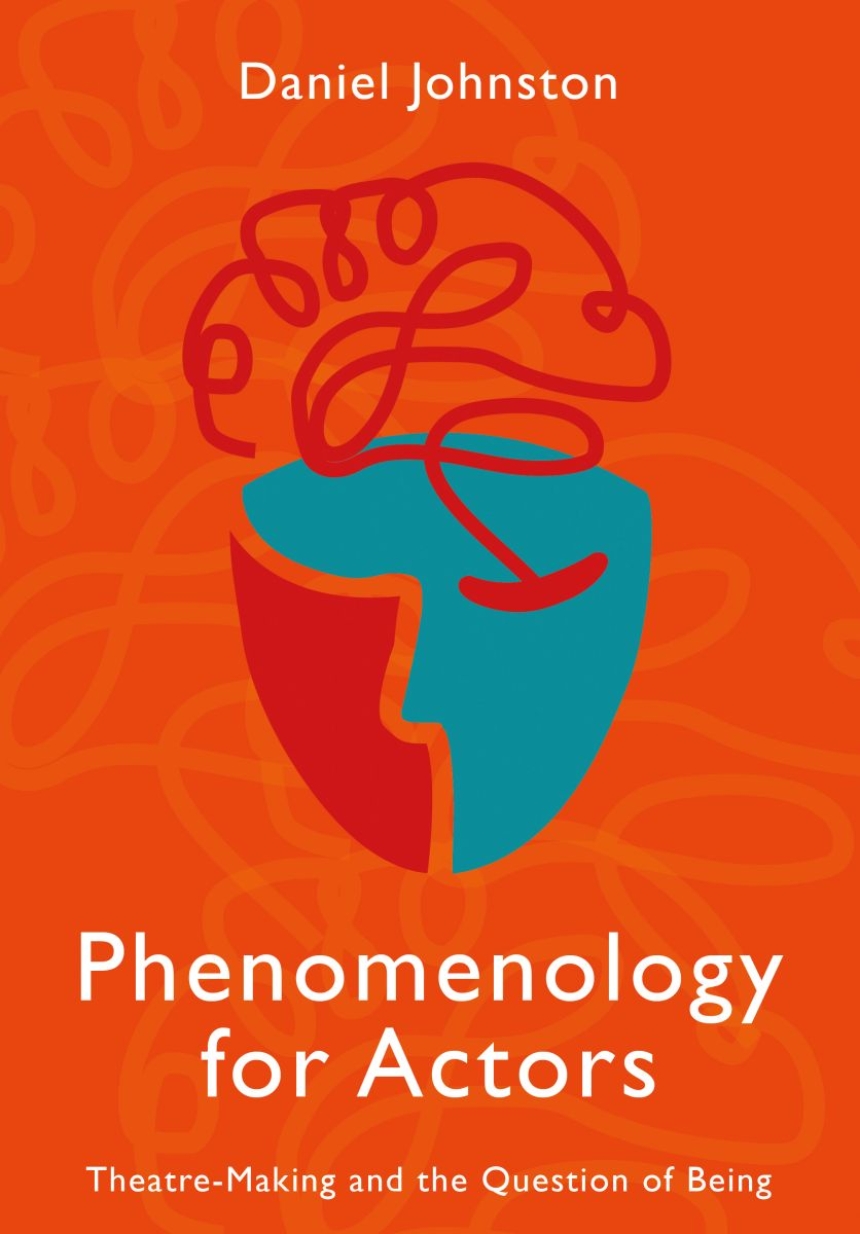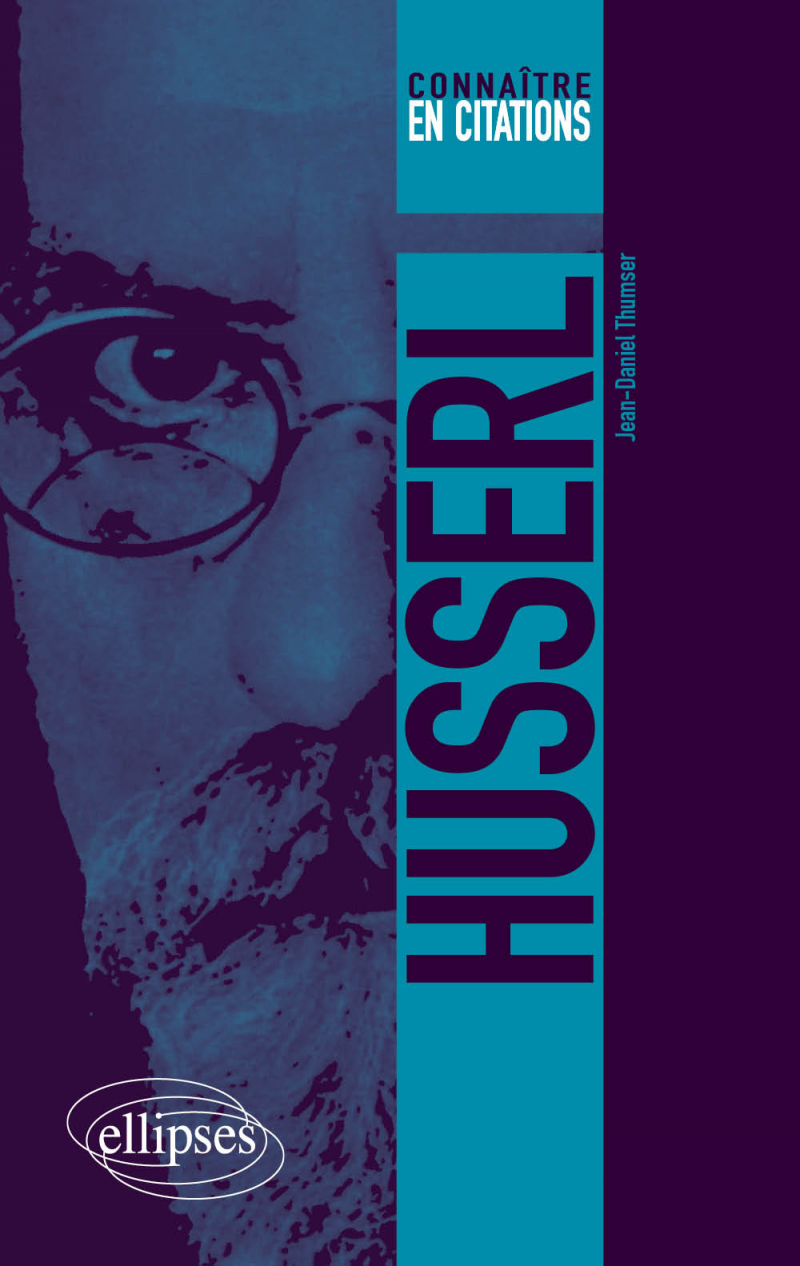 Ce que nous ne savons pas des valeurs
Ce que nous ne savons pas des valeurs
Éditions Mimésis
2021
Paperback 14,00€
152
Reviewed by: Noëlle Miller (University of Vienna)
Dans sa préface intitulée « L’énigme des valeurs » la traductrice Patricia Limido contextualise cet essai dans l’œuvre de Roman Ingarden et résume son raisonnement avant d’en proposer la première traduction française. Bien qu’il développe sa théorie des valeurs à partir et souvent à l’aide d’exemples tirés du domaine esthétique (une de ses premières œuvres majeures est L’œuvre d’art littéraire) elle s’attache à juste titre à montrer que le réel enjeu de recherche d’Ingarden est toujours d’ordre ontologique. En effet Roman Ingarden se propose de démontrer que les conditions de possibilité des valeurs – esthétiques, morales, intellectuelles – existent objectivement. Car des valeurs dépendent la responsabilité morale de l’homme et ses exigences. Avant de qualifier les valeurs plus avant, trois problèmes se posent à une théorie des valeurs qui expliquent le titre Ce que nous ne savons pas des valeurs. D’abord il faut identifier les différents domaines de valeur pour en dégager des rapports de hiérarchie ou de conditionnement, ensuite leur structure ontologique, sont-elles rattachées à des objets porteurs telles des propriétés, auquel cas les valeurs seraient objectivement fondées et sinon troisièmement sont-elles objectives ou subjectives, c’est-à-dire relatives. Limido regrette qu’Ingarden réduise finalement les valeurs à deux domaines : les valeurs vitales et culturelles. Dans cet essai il se limite même aux valeurs esthétiques et morales et cherche à déterminer leur forme, leur matière et leur mode d’être. En particulier les valeurs possèdent « une valence » (Wertigkeit) qui excède la forme et la matière, et qui fait que la valeur a une pertinence et n’est pas une illusion ou une apparence. À côté des limites de l’analyse ontologique, la valeur est exposée au jugement et à la reconnaissance subjective. C’est pourquoi il commence d’abord par essayer de les identifier, à qualifier plus avant leur mode d’être spécifique. Les valeurs ne sont pas des objets, « mais des « quelque chose » individuels, plutôt apparentés à l’ordre des qualités individuelles »[1]. Pourtant elles ne sont pas des propriétés ni des caractéristiques, car elles sont inséparables d’un tout (unselbständig) qui rend possible leur survenance. Elles ne peuvent pas non plus être des propriétés dérivées, car c’est précisément sa nature ou son essence même qui en fait une valeur. Elles ne dépendent pas non plus des récepteurs, puisqu’elles valent en soi et pour soi. La valeur des yeux par exemple sera variable pour un musicien ou pour un automobiliste qui n’en font respectivement pas le même usage, pourtant la valeur des yeux est véritable. Ainsi y a-t-il des valeurs non perçues, mais qui conserve quand même leur réalité. Finalement il les qualifie de superstructure (Überbau), ni propriétés complètement indépendantes des objets, ni réductible à l’objet sensible lui-même. Elles apparaissent « sur la base d’un fondement dont elle dérive et qu’en même temps elle dépasse »[2]. Patricia Limido rapproche ce concept ingardien des philosophes Donald Davidson pour la notion équivoque de survenance. Comme Ingarden le philosophe analytique Eddy Zemach a la volonté de fonder objectivement les valeurs et conclue que « les propriétés esthétiques surviennent ou émergent des propriétés non-esthétiques »[3]. Elles sont donc réelles parce qu’elles dépendent de traits qui caractérisent objectivement des objets mais non réductibles à ceux-là. Le passage de la perception phénoménale au jugement esthétique ou moral s’opère par le désir ou tout autre relation intentionnelle telles les croyances et les émotions. Si les conditions d’observation sont les mêmes pour tous, alors cette relation intentionnelle est également objective pour Zemach. Ces conditions peuvent être l’apprentissage scientifique ou des connaissances spécifiques pour pouvoir juger d’une œuvre. Or Ingarden doute de cette relation invariante et attribue aux valeurs un mode d’être inédit.
Finalement c’est un rapport dialectique que Patricia Limido expose et souligne chez Ingarden : les valeurs sont des phénomènes observables, matériels et sont en même conditionné ontologiquement, des conditions de possibilité que nous constituons aussi, « la part d’activité et de passivité du récepteur »[4].
Ce que nous ne savons pas des valeurs
Dans son premier chapitre « multiplicité et contrariété des valeurs », Ingarden se pose le problème de la diversité des valeurs et choisit de les catégoriser en valeurs vitales et valeurs culturelles. Il soulève aussi dès le départ la difficulté de délimitation : une valeur morale comme le courage ou l’héroïsme peut être considérée une valeur esthétique et vice-versa. Il nous manque un principium divisionis qui nous permettrait de diviser les valeurs fondamentalement esthétiques de celles fondamentalement morales. C’est la détermination qualitative qui distingue généralement les valeurs. Intuitivement nous pouvons ordonner les valeurs apparentées, mais quant à ce qui constitue cette parenté, il est difficile d’en donner une définition conceptuelle. De plus, à l’intérieur même d’une qualité telle la « beauté », il existe différents types fondamentaux, telle la grâce ou la perfection et différentes significations. « Bon » n’a pas une signification morale dans tous les contextes. Les valeurs positives se délimitent aussi de leur corollaire négatif, qui a aussi une qualité spécifique. Ces contradictions font qu’il faut déterminer les conditions d’apparition des valeurs : un homme libre et psychiquement sain sont des conditions nécessaires mais pas suffisantes. Mais même si on arrivait à déterminer « la totalité des conditions nécessaires et éventuellement suffisantes pour la réalisation de telles valeurs »[5] rien ne peut remplacer l’intuition selon Ingarden. « Rien ne peut nous libérer du devoir scientifique qui nous incombe d’exercer la vision intuitive [der intuitive Erschauung] de la spécificité des valeurs, tout comme de l’effort spirituel qui lui est lié »[6]. Repérer la qualité d’une valeur est un moment indispensable, mais ne nous éclaire pas encore sur ce qui la détermine constitutivement. On peut encore chercher à déterminer les valeurs par rapport aux comportements qu’elle suscite, mais là aussi elle ne remplace pas l’appréhension conceptuelle d’une valeur. Car réduire une valeur à son vécu ou à l’attitude adoptée revient à dire qu’en réalité il n’existe que des ressentis subjectifs. C’est la conception des positivistes tel Leon Petrazycki qui n’autorisent aucune métaphysique des valeurs et rejette leur objectivité. Par rapport à une œuvre d’art par exemple il y aura autant d’états de plaisir que de récepteurs est pourtant la valeur unique de ce tableau existe bel et bien, indépendamment des admirateurs ou de ceux qui seront insensibles à sa beauté.
Malgré les difficultés donc Roman Ingarden refuse de capituler à définir les valeurs comme le fait Max Scheler par exemple[7] et tient au contraire à en démontrer leur scientificité. Il retient donc pour ce premier chapitre que ce qui distingue les valeurs sont leur matière, moment qualitatif qui se laissent abstraire, dont il existe deux cas de figures : A est inséparable unilatéralement de B, alors A ne se rencontrera qu’en présence de B. Ou alors A est dépendant de B équivoquement et apparaîtra avec un apparenté de B, Bn. Toute valeur individuelle présentant une qualité Bn appartiendra à l’espèce de valeur A. Les moments abstraits d’une valeur peuvent donc servir de principe de répartition à la formation de ses types individuels. Mais un principe qui distingue les types fondamentaux de valeurs reste encore ouvert. La matière peut donc servir à différencier des types subordonnés de valeurs.
Quant à ce qui distingue les valeurs fondamentales, il semblerait que ce soit leur forme, dont traite le deuxième chapitre « La forme de la valeur ». Au premier abord il semble que la valeur soit la propriété d’un objet, elle est toujours valeur de l’objet auquel elle appartient. Cependant beaucoup d’objet, processus et choses physiques, ne sont pas doués de valeur, mais seulement de propriétés physiques, forme spatiale, densité etc… Il faut donc différencier les valeurs des « propriétés chosales de l’objet »[8], leurs caractéristiques physiques. Il existe alors deux éventualités : soit la valeur est une propriété secondaire, soit elle provient de la relation entre l’objet et la personne qui entre en contact avec lui. C’est parce qu’une chose a une certaine forme qu’elle est belle : la valeur « belle » tient à sa propriété physique de la forme. Dans ce cas la valeur serait une propriété dérivée, secondaire de la première, qui est sa caractéristique physique. Une autre manière de déterminer la valeur d’un objet serait de l’organiser selon l’utilité, les sentiments ou les désirs qu’il suscite pour la personne. Encore faudrait-il pouvoir retenir les propriétés qui entrent en ligne de compte pour constituer la valeur : Ce n’est pas parce qu’une lampe a une lumière utile à l’homme que cette utilité constitue la valeur de la lampe. L’utilité serait à son tour dérivée d’une autre valeur, accomplir un travail à l’aide de la lumière par exemple. Une autre conception constitue à dire que l’objet n’a de valeur que lorsqu’il est reconnu comme tel par l’homme ou la communauté humaine. Or toutes les valeurs ne sont pas relatives à quelque chose, telle que la « maturité » ou la « grâce ». Que la valeur viendrait de la relation reste donc très obscure.
Ainsi toutes les tentatives de donner une forme a la valeur soulèvent des doutes et ne permettent pas de la définir positivement. La valence d’un objet est son essence et semble être un mode d’être complètement nouveau, incomparable à une caractéristique. Ingarden met donc en doute l’identité selon laquelle les valeurs seraient des propriétés des objets, car c’est la valence qui fait qu’on privilégie la réalisation d’une valeur plutôt qu’une autre. Sa forme, appelée objectité [Gegenstandlichkeit], est structurellement différente de l’objet[9]. La valence excède la forme est la matière et constitue le mode d’être spécifique de la valeur. C’est elle qui exprime l’essence de la valeur et qui lui donne sa dignité. Elle n’est pas rajoutée de l’extérieur, sinon elle ne serait pas véritablement, authentiquement une valeur, mais émerge de l’objet auquel elle revient, elle est l’expression de son essence. Il appelle qualité-de-valeur ce qui détermine la hauteur, la négativité ou positivité et le mode d’être de la valeur.
Il va ensuite chercher à déterminer « le mode d’être de la valeur ». Les valeurs d’utilité et esthétique dépendent respectivement de l’outil et de l’œuvre d’art qui les portent. Le mode d’être des valeurs morales est complètement différent : elles n’existent pas réellement à la manière d’un événement ou d’un processus dans le temps, mais elles sont inséparables de leur porteur ou dérivées de leurs propriétés. Elles ne sont donc ni objet idéal, immuable, puisqu’elles peuvent se réaliser dans l’action d’un homme, ni objet réel, ni intentionnel. Les valeurs valent, c’est-à-dire qu’elles ont la forme du « devoir-être », qui peut ou non se réaliser. Quant aux critères des valeurs, lesquelles doivent ou non être, ceux-ci nécessitent un nouveau terrain de recherche. Ceci dépend en partie de la hauteur des valeurs.
Ce qu’Ingarden entend par « la hauteur » des valeurs signifie sa supériorité hiérarchique. Beardsley affirme qu’elle n’a de sens qu’à l’intérieur d’un type fondamental de valeur, à savoir qu’on ne peut comparer une valeur esthétique à une valeur morale, mais seulement des valeurs esthétiques entre elles par exemple. Qu’est-ce qui nous permet d’affirmer qu’une valeur morale est toujours plus haute qu’une valeur esthétique, même très haute ? Là aussi nous ne savons pas en quoi consiste exactement cette valeur, s’agit-il de son mode d’être, de sa qualité-de-valeur ou de son devoir-être. Les théories absolutistes affirment que la valeur d’un objet doit être strictement distinguée de son prix. « La hauteur de la valeur, au contraire, est déterminée de manière univoque et invariable par sa matière et seulement par elle, et elle reste indépendante des variations de prix »[10]. La hauteur relative résulte de la comparaison des objets doués de valeur entre eux, mais présuppose la valeur absolue. Les théories relativistes affirment que la valeur d’un objet dépend des circonstances, de la loi de l’offre et de la demande comme des innovations sur le marché qui font qu’une valeur devient « plus mauvaise ». Il n’existe donc pas encore de « critère » bien défini de la hauteur de la valeur.
Dans le prochain chapitre il s’attaque au problème de « l’autonomie des valeurs ». Lorsqu’Ingarden parle d’autonomie, il entend par là la séparabilité des valeurs entre elles, puisqu’on a vu que les valeurs étaient inséparables des objets auxquels elles appartenaient. Si une valeur n’apparait sur un objet qu’en présence d’une autre valeur du même ou d’un autre type alors elle est « non-autonome ». Cette distinction entraîne aussi des conséquences sur la théorie de l’art, car pour nombre de théoricien et Platon lui-même l’Idée la plus haute est celle de l’identité du Bien, du Beau et du Vrai. C’est-à-dire qu’il ne suffit pas à une œuvre d’art d’être « belle », encore faut-il qu’elle serve des valeurs morales et la vérité soit en montrant des hommes moraux, soit au contraire en dépeignant des valeurs négatives comme le fait le courant réaliste. Ce formalisme repose justement sur le fait qu’il ne reconnaît pas, contrairement à la théorie de « l’art pour l’art », de valeurs esthétiques intrinsèques à l’art. Cette querelle est dû à l’insuffisance de distinction sur le caractère spécifique des valeurs. Une autre source de confusion entre les types de valeurs, leur dépendance ou indépendance sur un objet, est dû à notre expérience et sensibilité faussée. Ceci est dû aux modifications que les valeurs subissent mutuellement de manière bilatérale ou unilatérale. Dans une œuvre architecturale par exemple la symétrie peut apparaître sur fond d’asymétrie ou dans une œuvre littéraire le lyrique après le tragique. Ces valences peuvent s’harmoniser comme elles peuvent annuler leur effet et partant ne pas être perçues. C’est pour cela que l’étude de l’autonomie et de l’indépendance des valeurs est d’une grande importance pour l’analyse des objets esthétiques.
Le dernier chapitre « La fondation des valeurs » interroge le problème de l’objectivité des valeurs à proprement parler. Quelle est la relation entre la valeur et son objet et comment celle-ci est-elle fondée dans celui-là ? Il expose alors les deux positions opposées qu’il qualifie chacune de dogmatique. Soit on admet une coordination nécessaire des propriétés qui permettent l’apparition d’une valeur dans un objet, soit on la réfute et décide par-là que les valeurs se montrent de manière tout à fait contingente. Pourtant les valeurs se montrent sur le « visage » des œuvres d’art et on est porté à croire qu’il existe des fondements théoriques à une science de l’art, comme à une science de la morale.
En conclusion, Ingarden, on l’aura vu, définit les valeurs presque entièrement de manière négative, par ce qui nous manque et ce qui nous reste à savoir quant à leur nature, ce faisant déployant en même temps un vocabulaire susceptible d’en rendre compte et toujours mû par la conviction intrinsèque à son intuition, que les valeurs, ou leur possibilité, existent. C’est ce rappel justement qui, pour la traductrice, fait la « valence », pour reprendre ses termes, de cet essai aujourd’hui. Nous saluons la traduction française de cet essai, paru d’abord en polonais puis en allemand, pour avoir trouvé des équivalents adéquats à la terminologie très technique d’Ingarden et du courant phénoménologique en général.
[1] Roman Ingarden. 2021. Ce que nous ne savons pas des valeurs, préface et traduction française par Patricia Limido, p. 26. Sesto S. Giovanni: Editions Mimesis.
[2] Ibid, 32.
[3] Ibid, 35.
[4] Ibid, 43.
[5] Ibid, 58.
[6] Ibid, 60.
[7] Ibid, 66.
[8] Ibid, 74.
[9] Ibid, 81.
[10] Ibid, 116.







